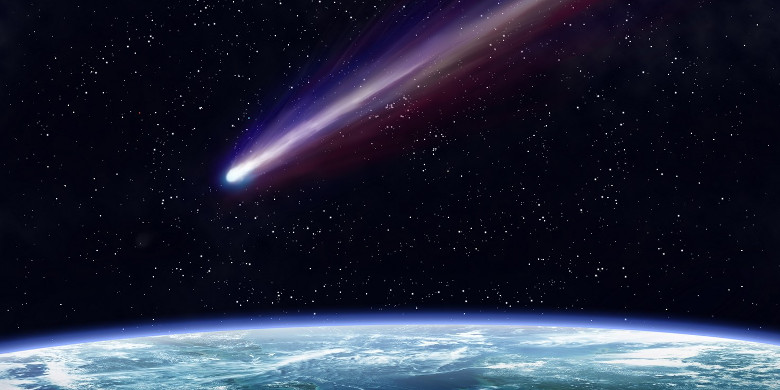Friday cosmopost: collisions of galaxies, superkvazar and super hot planet

The past year was rich in important events in astronomy and cosmonautics — Cassini-kamikaze, the discovery of gravitational waves and new unusual exoplanets, the Voyager anniversary, and the All-American eclipse. Let's finally spend the 2017 astronomical year with a new selection of space video on Friday.
In 2016, two Virgo and LIGO research collaborations announced the joint discovery of gravitational waves. This epoch-making event, its significance for physics and astronomy, is so great that the Nobel Committee did not postpone the matter, and the next year awarded the well-deserved prize. Gravitational waves are the perturbations of the gravitational field, which propagate in space as waves on the surface of a liquid. There is also a beautiful term “ripples of the space of time”. They are extremely weak, so until recently they could not be registered even with the most modern instruments, and they began to try in the 1960s. But in the autumn of 2015, using the Virgo and LIGO observatories with laser interferometers, the existence of gravitational waves was finally proved experimentally - the instruments caught gravitational disturbances from the confluence of two black holes at a distance of 1.3 billion light years, one weighing 30 Suns, the second weighing 100 Suns
And in the summer of this year, for the first time, gravitational waves were recorded in addition to a powerful burst of gamma radiation - this is the result of the fusion of two neutron stars at a distance of about 130 million light years. Their mass was from 1.1 to 1.6 solar masses. The diameter of an average asterisk is about 10–20 km, so the density is such that a teaspoon of the substance of a neutron star weighs about a billion tons.
By the way, since we are talking about black holes. Everyone knows what it is: the remains of stars are so tightly compressed by gravity that the second cosmic velocity on their surface is higher than the speed of light — even photons are unable to leave the black hole. Even astronomy lovers know that galaxies are forming around supermassive black holes, whose mass goes beyond the limits of human imagination. This video shows the comparative size of some planets, stars, nebulae, galaxies - and two COLOSSAL black holes were packed: one in the NGC 1277 galaxy (about 14-20 billion solar masses), the second in the TON 618 quasar (66 billion solar masses, luminosity 4 × 10 40 watt accretion disk = 140 trillion suns).
When a supermassive black hole actively absorbs interstellar gas, it accelerates, contracts and heats up, falling on the event horizon. As a result, a black hole can emit an incredible amount of energy, mostly with two polar "torches" - jets. Such objects are called quasars. The power of their radiation can exceed the total energy of the stars of entire galaxies. A few years ago, the most powerful of the known quasars was found - SDSS J1106 + 1939. During the year, he ejects about 400 solar masses of matter, and his luminosity is 2 trillion times higher than that of the Sun. God forbid our planet to fall under this "exhaust". Fortunately, this particular quasar is very far from us.
Technological singularity is getting closer, and the benefits of machine learning and neural networks are increasing. The Kepler Space Telescope is tirelessly searching for evidence of the presence of exoplanets around distant suns. But we are still unable to see other planets, we find them by indirect signs. And at the end of 2017, researchers from Google, for the first time in the world, discovered an exoplanet using a neural network, feeding it to the accumulated data of Kepler's observations. The planet was called Kepler-90i, it rotates so close to its star that at noon the temperature on the surface is above 400 0 C.
However, this is a refrigerator compared to the hottest exoplanet discovered today - the gas giant KELT-9b: the surface temperature reaches 4300 0 C. This is more than the temperature of many stars, and only 900 degrees less than the temperature of the Sun.
The collision of galaxies is an unimaginably long and immeasurably more interesting ... not even an event, it is a whole era. And now we can see a very beautiful collision of the so-called “Antenna galaxies” - NGC 4038 and NGC 4039. In the general picture you can see two curved tails - these are loops of stars and interstellar gas, which galaxies began to lose as they approached. two supermassive black holes began to twist around a common center of mass. These plumes are similar to insect antennae, hence the name of this stellar hyper-formation.
And finally, if you have a VR helmet or glasses, then do not be lazy to watch this video. Here you can observe and even transfer to the surface of six real exoplanets from those currently open.
')
Source: https://habr.com/ru/post/374195/
All Articles